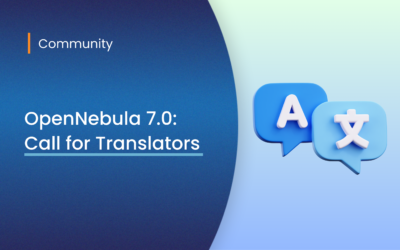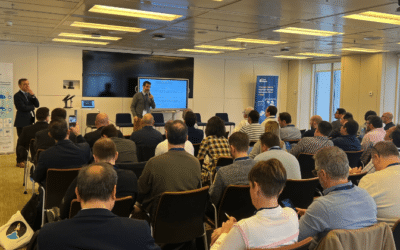Back in November 2007 (four years ago!) we published the first OpenNebula project website (see what it looked like back then, thanks to the Internet Archive), as we geared up for our first release of code (which did not take place until March 2008). The OpenNebula project was created as a way to transfer the main results of our cutting-edge research on efficient management of virtualization in large-scale distributed infrastructures and, since our first software release, OpenNebula has evolved into an active open-source project with a community that, by many measures, is more than doubling each year:
- Website Access. From 35,842 visits and 285,965 page views in 2008 to 579,571 visits and 6,992,300 page views in 2011, which means a 150% and 190% average annual growth respectively. During the last week we had 15,300 visits, 194,000 page views, and 570,000 hits.
- Mailing List. From 227 messages in 2008 to 4,341 in 2011, which means a 170% average annual growth. At present we have more than 800 registered users.
- Downloads from Project Site. From 1,865 downloads in 2008 to 25,200 in 2011, which means a 140% average annual growth. In the last week, we had 900 downloads. These numbers do not include the OpenNebula packages distributed in openSUSE, Ubuntu or Debian, the downloads from our code repository, or the several cloud solutions embedding OpenNebula.
- Codebase History. From 30,000 lines of code in 2008 to almost 300,000 in 2011. Another interesting fact about the source code is how OpenNebula effectively uses several programming languages and technologies. Nevertheless, each programming language has its relative strengths and provides unique features to meet the needs of the different components in the architecture. Ohloh provides a very nice interface to see inside OpenNebula development and to compare it with other open-source projects.
These stats highlight the success of our strategy to deliver a fully open-source, Apache-licensed cutting-edge technology with the stability, the integration capabilities, and the latest innovations in Data Center virtualization to enable the most demanding cloud environments. OpenNebula features address real needs of leading IT organizations that depend on OpenNebula for their production environments. The requirements of our users are the driving force behind all our development efforts and we recently announced a new release cycle to improve user satisfaction by rapidly delivering changes based on user requirements and feedback. In other words, giving users what they want more quickly, in smaller increments, while additionally increasing technical quality.
Congratulations everyone for this 4th birthday of OpenNebula!




0 Comments